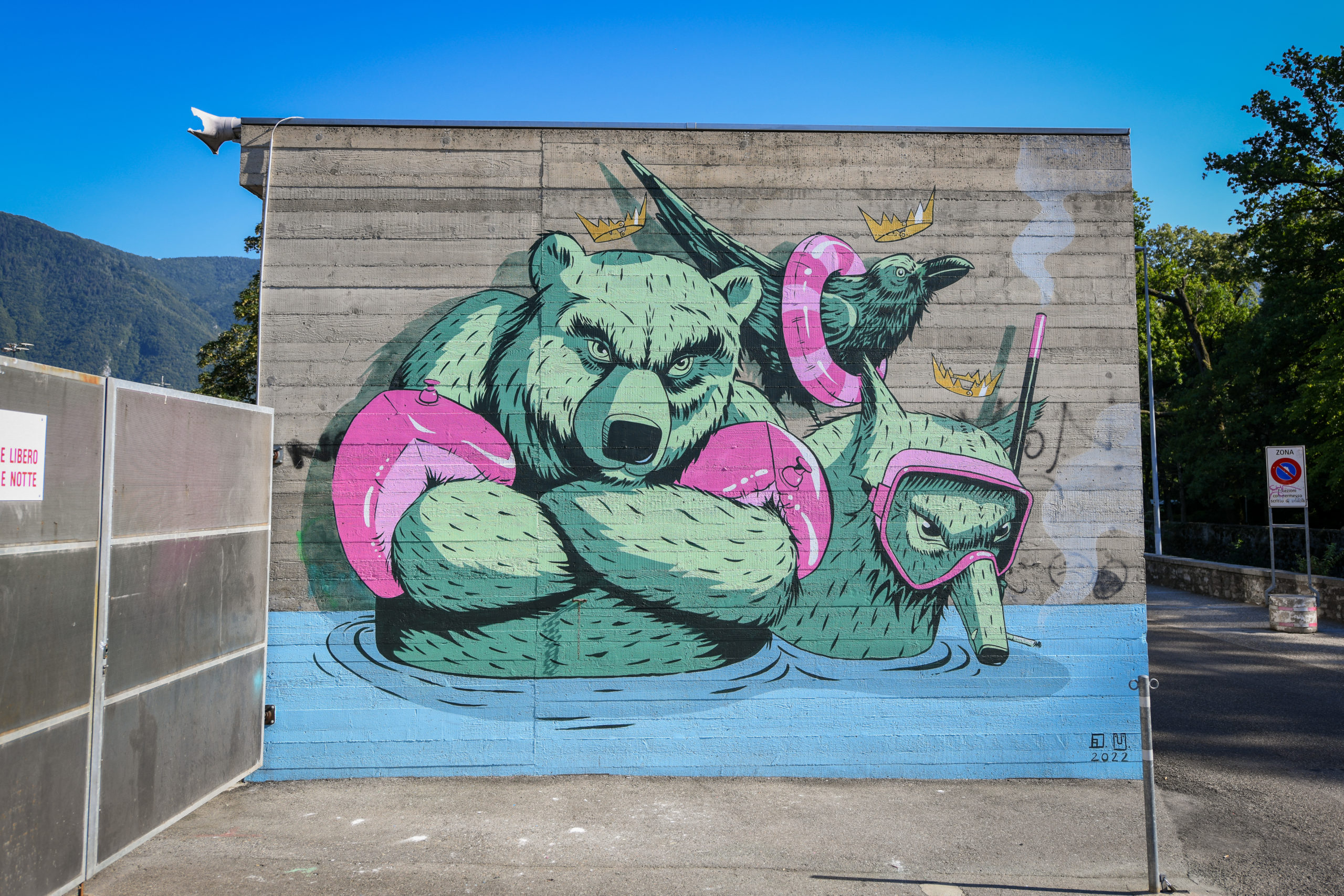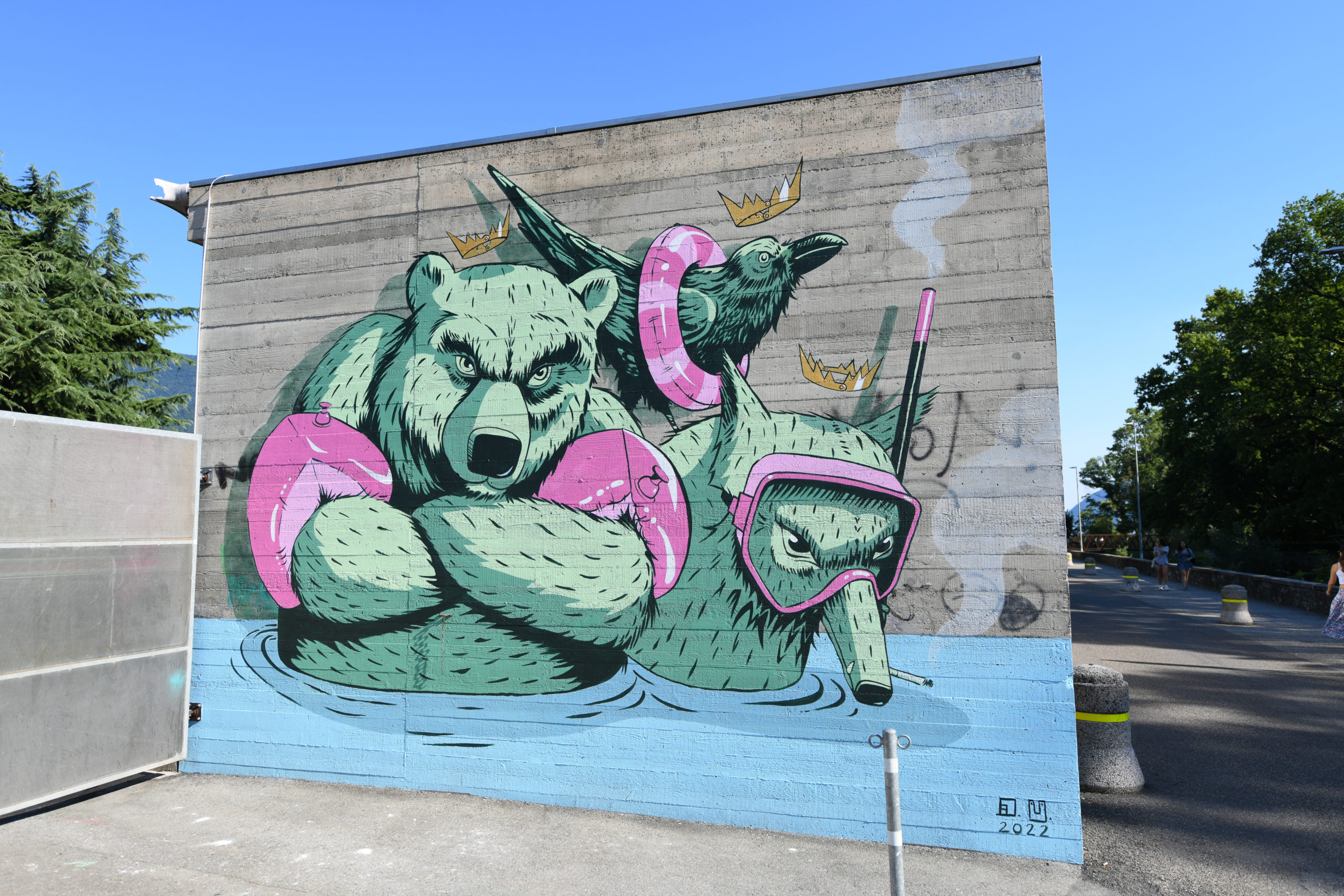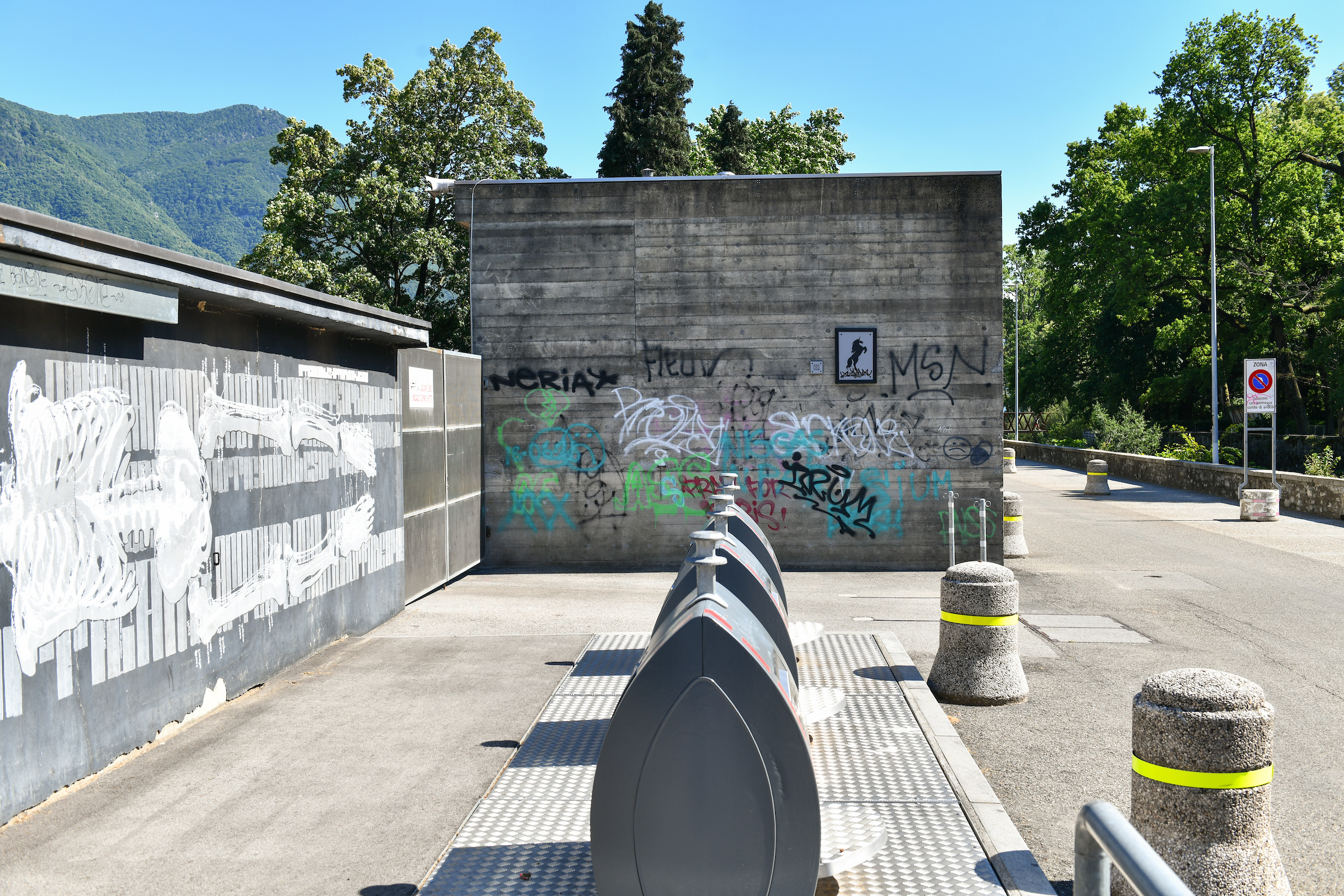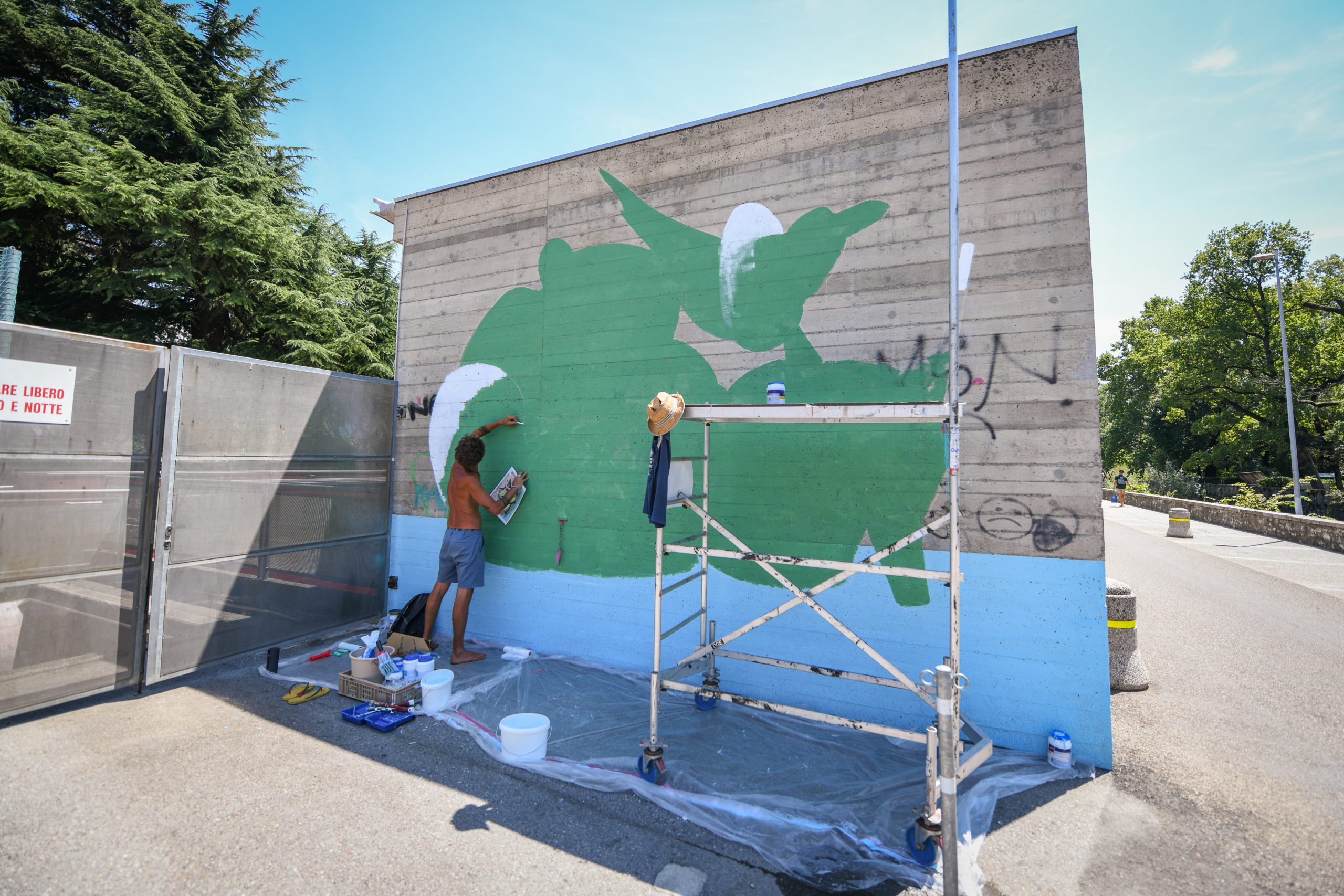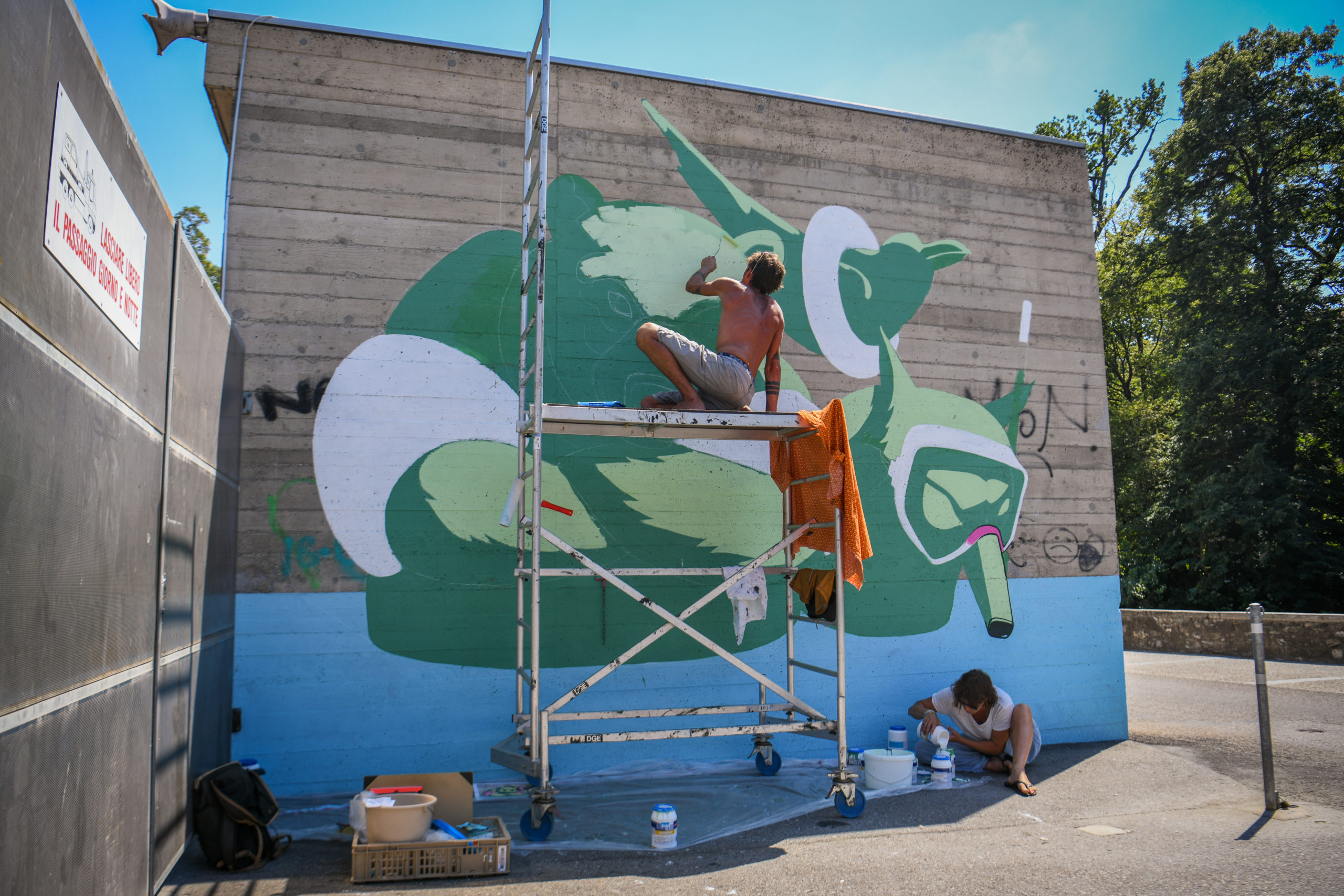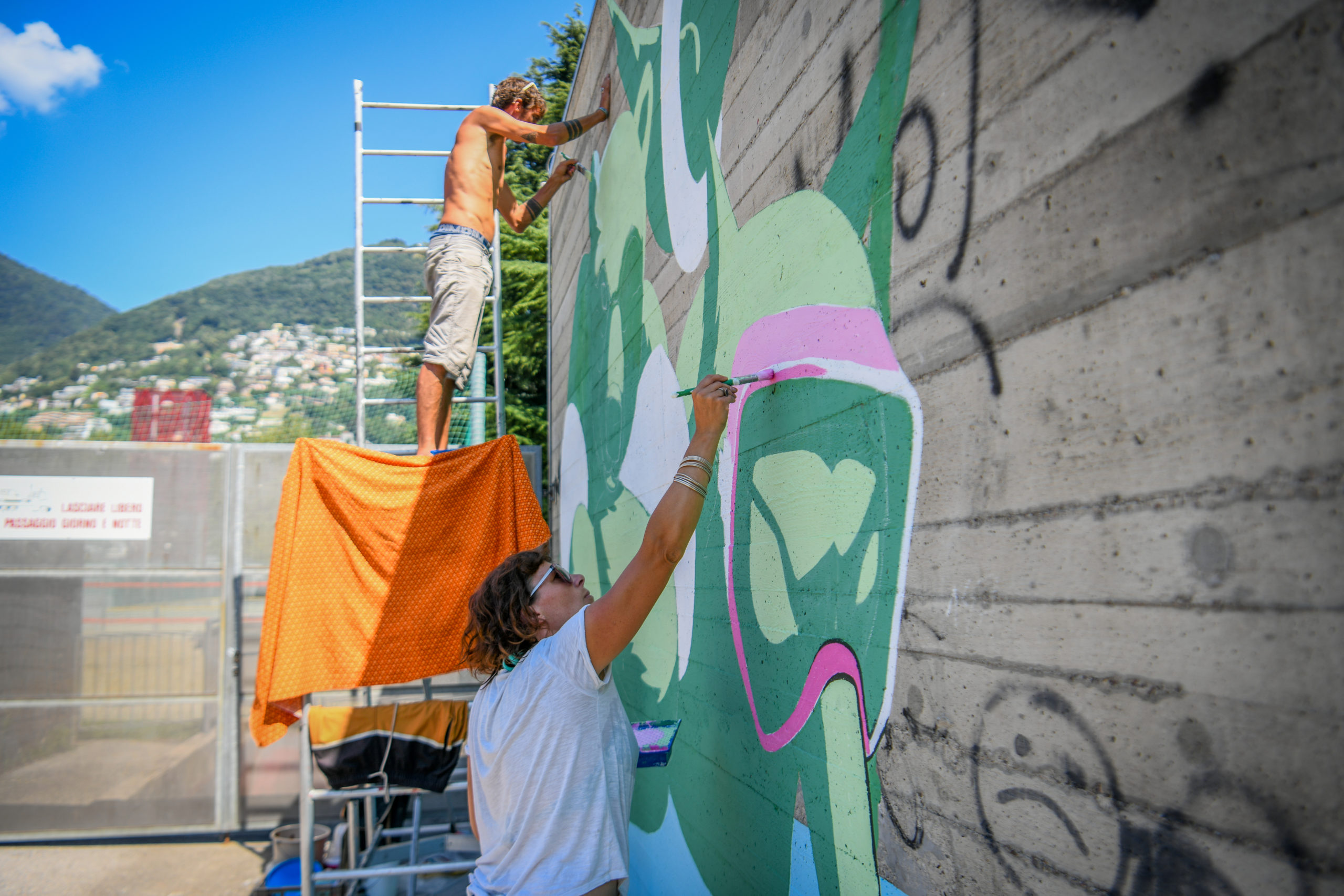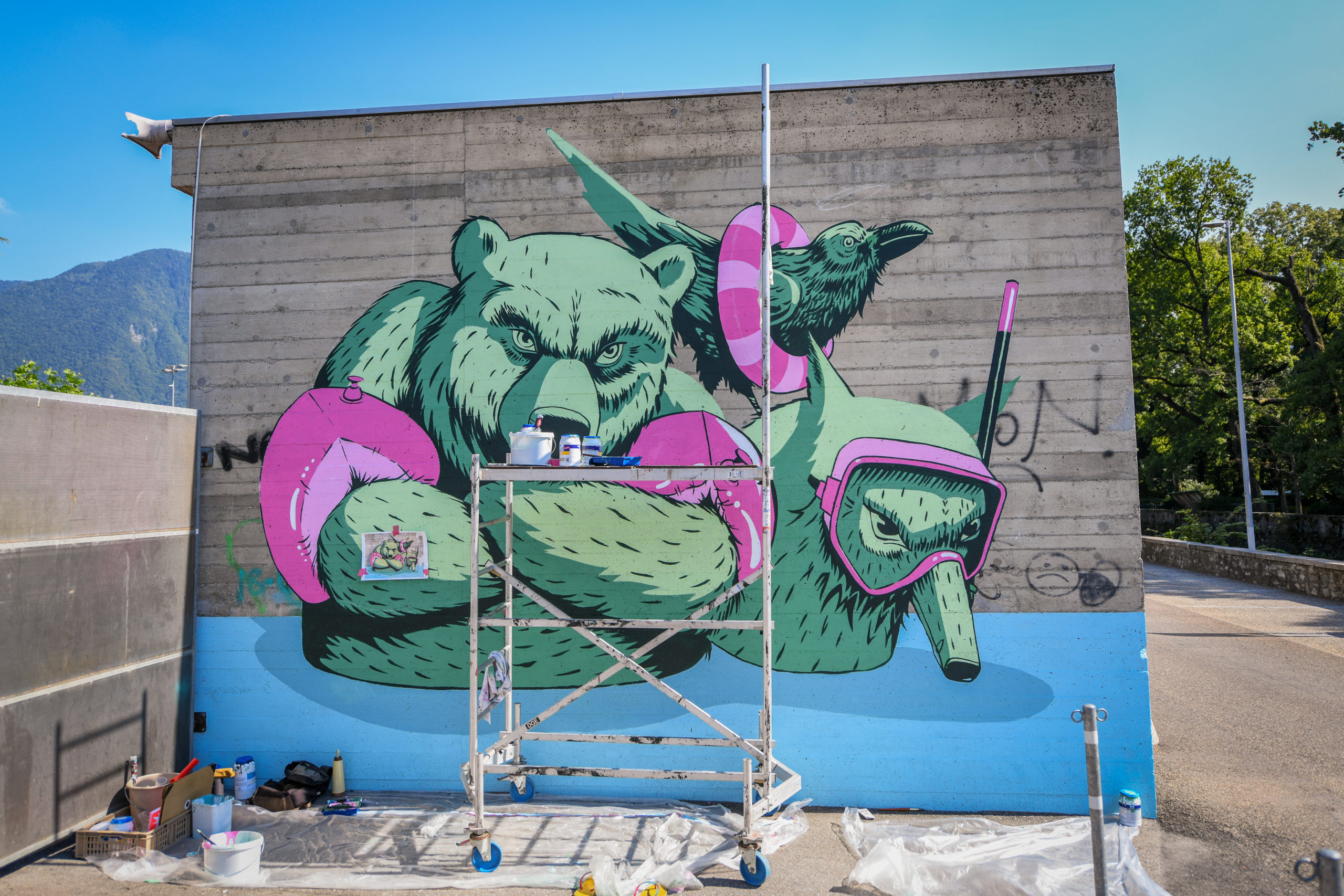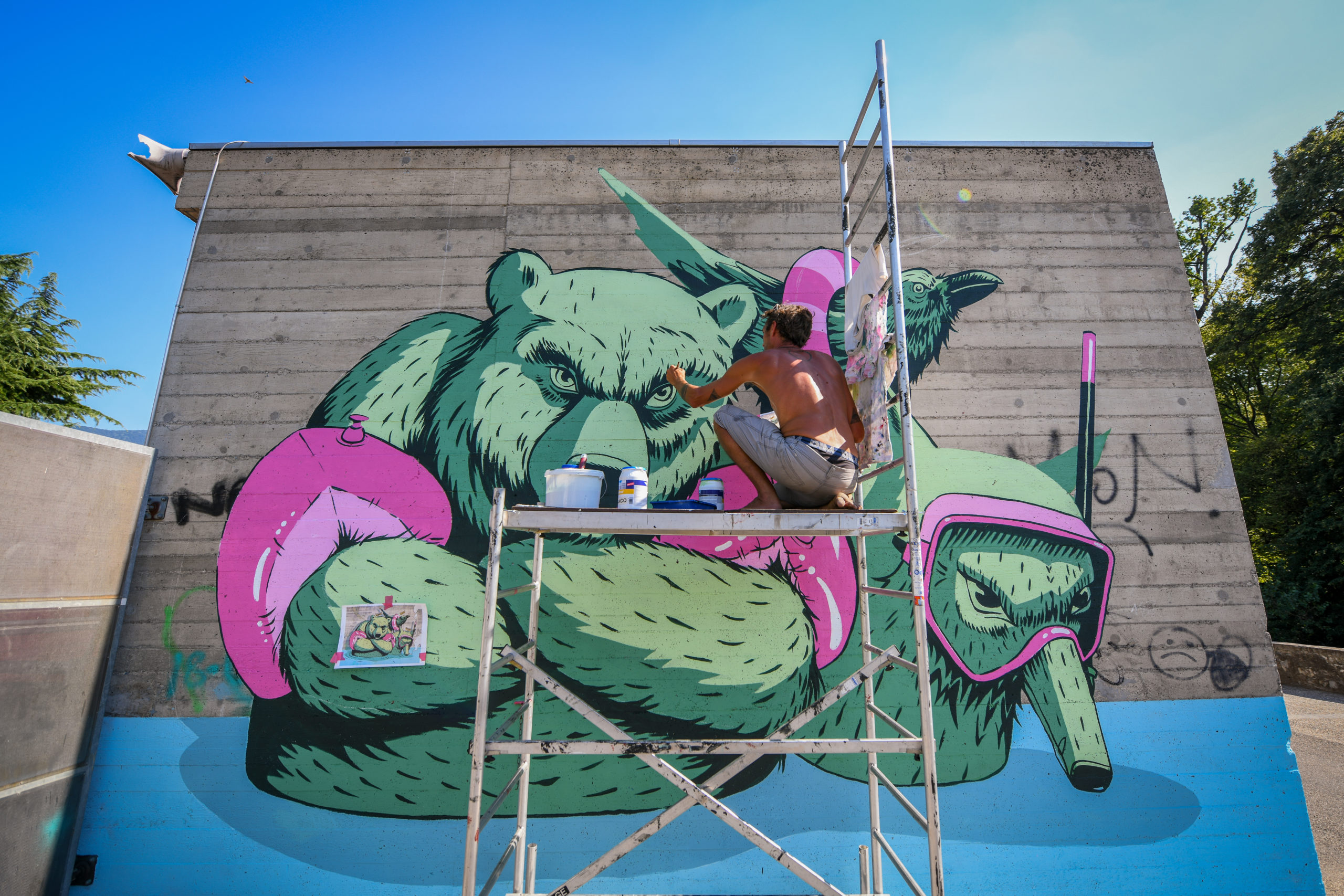50
Opera non più esistente
49
44
35
33
Opera non più esistente
32
Opera digitale
Opera non più esistente
27
Opera non più esistente
25
Opera non più esistente
22
Opera non più esistente
12
Opera non più esistente
10
Opera non più esistente
5
1
Opera non più esistente
Antoine Déprez e Ursula Bucher (CH)
Via Foce
Il trio spodestato
40
Con la loro opera, Déprez e Bucher invitano il pubblico a riflettere circa la percezione ambivalente che permane nei confronti della natura: i protagonisti del murale sono tre simboli dell’antico bestiario europeo, ovvero orso, lupo e corvo. Sovrani della natura e sinonimo di libertà, questi animali si sono spesso trovati a fungere da catalizzatori della natura più selvaggia e talvolta oscura dell’essere umano. Negli anni però, sono stati spodestati dal proprio ruolo per essere progressivamente sostituiti con il leone, il cane e l’aquila: animali più distanti dall’uomo europeo o più docili e addomesticabili. Si potrebbe immaginare si sia trattato di un’operazione di messa a distanza, di un tentativo di sradicare l’uomo dalle credenze antiche che lo mantenevano strettamente ancorato alla natura. Per far fronte ai propri timori, l’uomo europeo ha infatti da sempre tentato di controllare la natura agendo direttamente su di essa, con la speranza, forse, di allontanare o controllare allo stesso tempo anche il lato selvaggio e oscuro che alberga proprio dentro di sé. In quest’opera dunque, gli animali, rappresentanti della natura, sono arrabbiati, irritati, e le loro corone sono diventate trappole. L’opera propone così uno sguardo critico ad illustrare la visione odierna, ambivalente e talvolta superficiale che ancora possiamo nutrire dei confronti della natura.
[ EN ]
This mural by Déprez and Bucher invites the public to reflect on the ambivalent perception we have towards nature: the main characters in the mural are three symbols of the ancient European bestiary, i.e. the bear, the wolf and the raven. Sovereigns of nature and synonymous with freedom, these animals have often found themselves serving as catalysts for the wilder and sometimes darker nature of human beings. Over the years, however, they have been ousted from their role and have been gradually replaced with the lion, the dog and the eagle: animals that are more detached from Europeans or that are tamer and more easily domesticated. It could be said that this was a case of creating distance, an attempt to uproot humans from ancient beliefs that kept them closely anchored to nature. In fact, in order to address their fears, Europeans have always attempted to control nature by directly influencing it, hoping, perhaps, at the same time to control or distance themselves also from the wild and dark side that dwells within themselves. In this work, therefore, the animals – representatives of nature – are angry, irritated, and their crowns have become snares. The mural therefore offers a critical look at illustrating today’s ambivalent and sometimes superficial view that we may still have of nature.
Context: LongLake Festival
Created: 11-15 July 2022
Initiative: AUL
Contesto: Longlake Festival
Realizzazione: Tra l'11 e il 15 luglio 2022
Iniziativa: AUL
Visita il sito web dell'artista
Visita il sito web dell'artista 2
